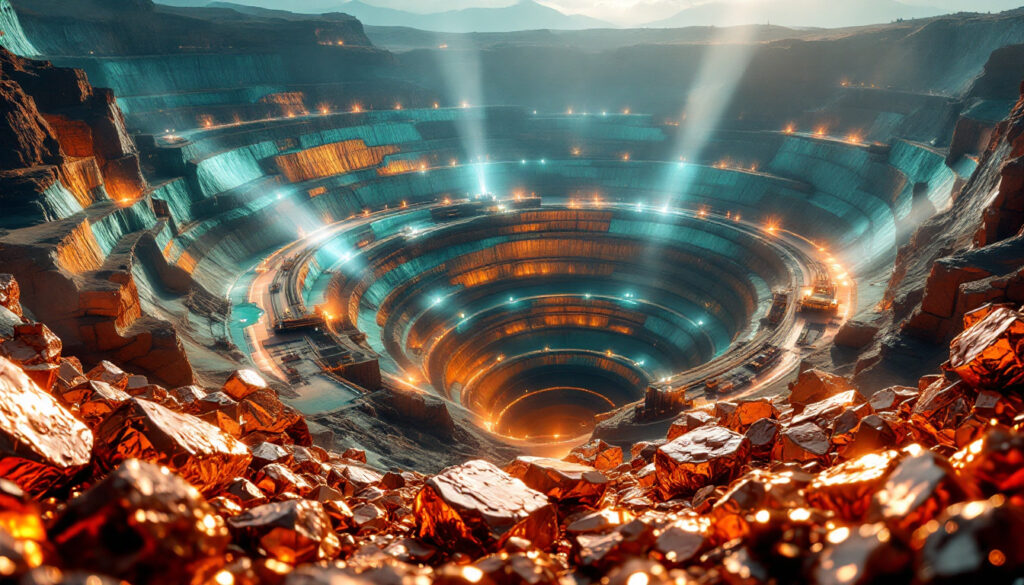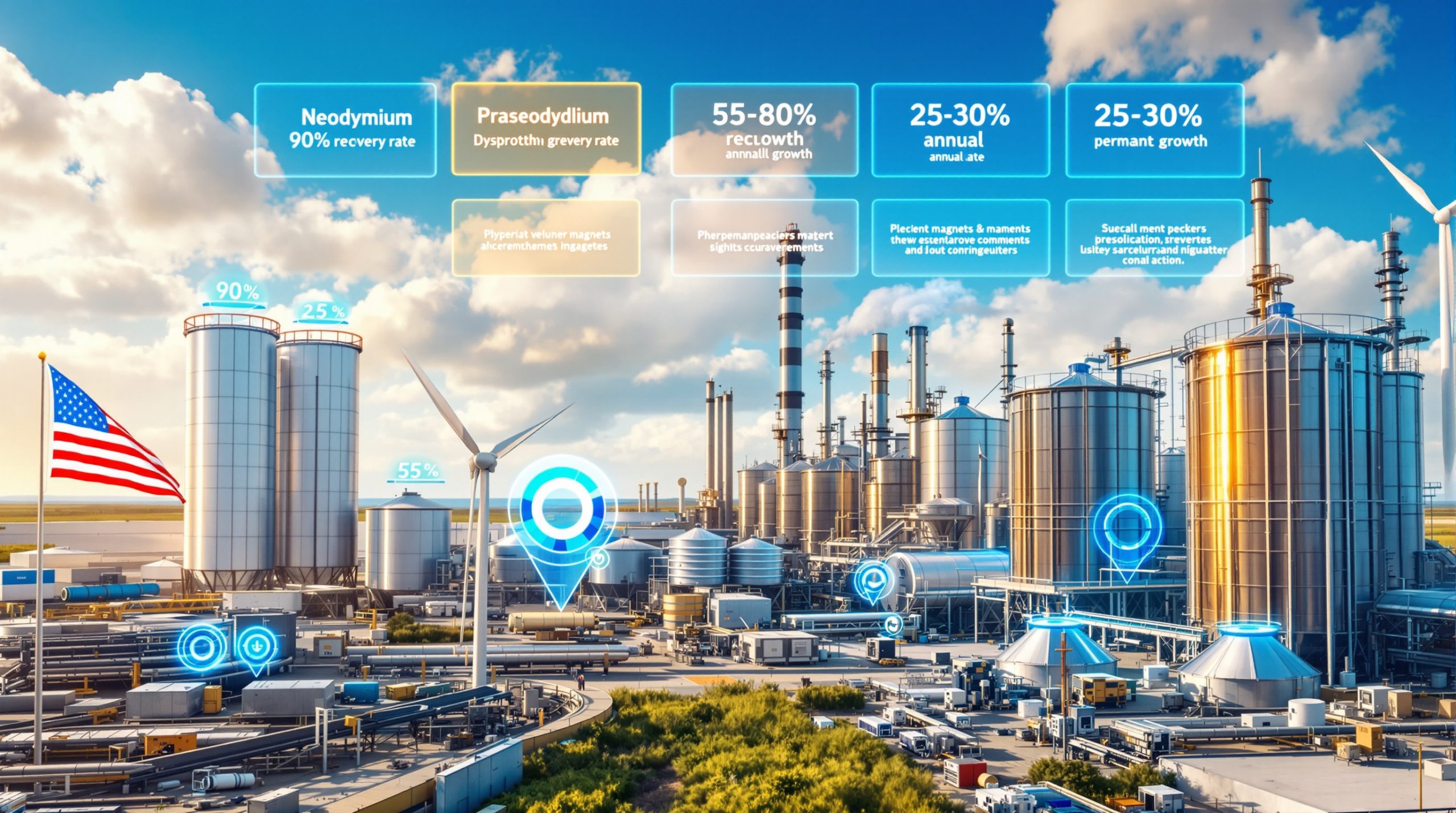Reko Diq and the World's Largest Operating Copper Mines: A Global Comparison
As the global transition toward electrification accelerates, copper has emerged as one of the most critical metals of the 21st century. Among the promising developments in this sector, Pakistan's Reko Diq project stands poised to join the ranks of the world's largest copper mines. This massive copper-gold deposit in Balochistan represents a potential game-changer in global copper production and could significantly alter the landscape of international mineral markets.
What is Driving the Global Demand for Copper?
The Electrification Revolution
The global push toward electrification has created unprecedented demand for copper. As countries worldwide commit to reducing carbon emissions, copper's exceptional electrical conductivity properties make it indispensable in the clean energy transition.
Renewable energy systems require up to 12 times more copper than traditional power generation. A single wind turbine can contain up to 4.7 tons of copper, while solar photovoltaic systems need approximately 5.5 tons per megawatt of generation capacity.
The International Energy Agency (IEA) forecasts that copper demand for clean energy technologies alone will double by 2040, creating a supply-demand gap that could reach 9.9 million metric tons annually by 2035—equivalent to 41% of today's global copper market.
Copper's Strategic Importance in Modern Economy
Beyond renewable energy, copper's unmatched conductivity makes it essential across numerous industries. Electric vehicles require 2.5-4 times more copper than conventional vehicles, with each EV containing approximately 80-85 kg of copper compared to 20-25 kg in traditional vehicles.
Copper's antimicrobial properties have also increased its use in healthcare settings, particularly following the COVID-19 pandemic. The metal kills 99.9% of bacteria within two hours of exposure, making it valuable for high-touch surfaces in hospitals and public spaces.
As data centers proliferate to support artificial intelligence and cloud computing, the economic factors behind the copper rally are becoming increasingly evident, with demand from this sector alone projected to increase by 45% by 2030, further straining global supply chains.
How Do the World's Largest Copper Mines Compare in 2024?
Top 7 Operating Copper Mines by Production Capacity
The global copper mining landscape is dominated by mega-mines concentrated in South America, with Chile maintaining its position as the copper production powerhouse:
-
Escondida (Chile): Producing 1,350 kt annually, Escondida remains the undisputed leader, responsible for approximately 5% of global copper production. Operated by BHP with partners Rio Tinto and JECO, the mine benefits from economies of scale that enable profitable operation despite declining ore grades averaging 0.72%.
-
Grasberg (Indonesia): With 800 kt annual production, this massive operation has transitioned from open-pit to underground mining. Notable for its exceptional gold content (0.96 g/t) that provides significant by-product credits, reducing effective copper production costs.
-
Collahuasi (Chile): Producing 600 kt annually, this high-altitude operation (4,400m above sea level) is jointly owned by Anglo American, Glencore, and Japan Collahuasi Resources. The mine features remarkable ore grades averaging 1.3%.
-
Morenci (USA): At 570 kt annual production, Morenci represents the largest copper producer in North America. Located in Arizona, the mine employs innovative leaching technologies that allow for profitable extraction from lower-grade ores (0.25-0.3%).
-
Cerro Verde (Peru): Producing 550 kt annually, this operation benefits from one of the mining industry's most efficient water management systems in the arid region of Arequipa.
-
Kamoa-Kakula (DRC): Also at 550 kt annual production, this relatively new entrant to the copper elite features exceptional grades averaging 4.2%—the highest among major producers—allowing for lower production costs despite challenging logistics in central Africa.
-
Buenavista del Cobre (Mexico): With 535 kt annual production, this Grupo Mexico operation represents the most significant copper producer in Mexico. The mine employs advanced flotation technology that has improved recovery rates by 11% since 2018.
Second-Tier Major Copper Producers
Several significant operations form the second tier of global copper producers:
- Antamina (Peru): 450 kt annual production with significant zinc, silver, and molybdenum by-products.
- Tenke Fungurume (DRC): 450 kt annual copper production alongside 15 kt of cobalt, making it a vital source of battery metals.
- El Teniente (Chile): 401 kt annual production from the world's largest underground copper mine.
- Cobre Panama, Las Bambas, Los Pelambres, and Polar Division: Each producing approximately 400 kt annually, representing a diverse geographical spread across Panama, Peru, Chile, and Russia respectively.
The recent Cobre Panama dispute and global copper supply challenges have highlighted the vulnerability of copper production to regulatory and political factors.
What Makes Reko Diq a Potential Game-Changer in Global Copper Production?
Reko Diq's Exceptional Resource Profile
The Reko Diq copper-gold project in Pakistan's Balochistan province represents one of the world's largest undeveloped copper resources. The deposit contains estimated reserves of 2.2 billion tonnes of ore with average copper grades of 0.53% and gold grades of 0.30 g/t, translating to approximately 11.7 million tonnes of contained copper and 21 million ounces of gold.
Unlike many aging copper deposits facing grade decline, Reko Diq offers a fresh resource with consistent mineralization across a massive porphyry system. The deposit features favorable metallurgy with low deleterious elements, enabling simpler processing and higher recoveries.
At its projected Phase 2 production capacity of 460 ktpa, Reko Diq and the world's largest operating copper mines would see this project immediately rank as the 8th largest copper mine globally based on current production levels. This represents a remarkable entry into the upper echelon of global copper production.
Development Timeline and Expansion Potential
Reko Diq's development follows a strategic phased approach that manages capital requirements while allowing for significant scaling opportunities:
- Phase 1: Initial development targeting 200 ktpa copper production
- Phase 2: Expansion to 460 ktpa, placing Reko Diq among the world's ten largest copper mines
- Phase 3: Potential expansion beyond 600 ktpa, which would elevate Reko Diq into the top five global copper producers
The project's vast untapped resources support a mine life exceeding 50 years, providing multi-generational production potential. Exploration work indicates significant upside, with several satellite deposits identified within the mining lease area.
Reko Diq's strategic timing coincides with projected copper market deficits beginning in 2025, positioning it to capitalize on anticipated higher copper prices as electrification drives global demand.
How Does Reko Diq Compare to Existing Major Copper Operations?
Production Capacity Comparison
| Mine | Annual Production (kt) | Country | Global Rank |
|---|---|---|---|
| Escondida | 1,350 | Chile | 1 |
| Grasberg | 800 | Indonesia | 2 |
| Collahuasi | 600 | Chile | 3 |
| Morenci | 570 | USA | 4 |
| Cerro Verde | 550 | Peru | 5 |
| Kamoa-Kakula | 550 | DRC | 6 |
| Buenavista del Cobre | 535 | Mexico | 7 |
| Reko Diq (projected) | 460 | Pakistan | 8 (potential) |
| Antamina | 450 | Peru | 9 |
| Tenke Fungurume | 450 | DRC | 10 |
Competitive Advantages of Reko Diq
Reko Diq offers several distinct advantages compared to existing copper operations:
-
Combined Copper-Gold Resource: Significant gold credits (projected at 0.30 g/t) will provide economic advantages through by-product revenue, potentially placing Reko Diq in the lower half of the global cost curve despite being a new operation.
-
Strategic Location: Positioned closer to Asian markets than South American producers, Reko Diq offers logistical advantages for supplying the region's growing demand, particularly from China and India, which together account for over 50% of global copper consumption.
-
Technological Innovation: As a greenfield development, Reko Diq can incorporate cutting-edge extraction and processing technologies from the outset, including autonomous haulage systems, renewable energy integration, and advanced water recycling techniques that can achieve 85-90% water recovery rates.
-
Modern Infrastructure Development: Unlike legacy operations constrained by existing infrastructure, Reko Diq can implement purpose-built facilities optimized for efficiency and sustainability, including modular expansion capabilities that reduce future capital intensity.
What is Pakistan's Vision for Copper Production?
National Mineral Development Strategy
Pakistan has developed a comprehensive National Mineral Development Strategy that positions Reko Diq as the centerpiece of the country's mining sector growth. The strategy aims to transform Pakistan from a minor player in the minerals industry to a significant contributor to global copper supply.
Key elements of the strategy include:
- Modernizing mining laws and regulations to align with international best practices
- Establishing a transparent fiscal regime that balances investor returns with national interests
- Developing specialized mining education programs to build local technical capacity
- Creating mineral processing infrastructure to capture more value domestically
Through this approach, Pakistan seeks to integrate into global critical minerals supply chains, particularly focusing on copper and associated metals essential for the clean energy transition.
Pakistan Minerals Investment Forum 2025 (PMIF25)
The Pakistan Minerals Investment Forum 2025 (PMIF25), scheduled for April 8-9, 2025, at the Jinnah Convention Centre in Islamabad, will serve as a premier platform for showcasing the country's mineral potential. This event will highlight Reko Diq alongside other significant mineral opportunities within Pakistan.
PMIF25 aims to connect industry leaders, investors, and policymakers to facilitate investment in Pakistan's mining sector. The forum will feature technical presentations on Reko Diq's development progress, exploration results from surrounding areas, and presentations on Pakistan's improving investment framework for the minerals sector.
What Challenges and Opportunities Face Reko Diq Development?
Infrastructure and Logistical Considerations
Reko Diq's remote location in Balochistan presents significant infrastructure challenges that must be addressed:
-
Water Management: Located in the arid Chagai district, the project requires innovative water solutions. Plans include a dedicated desalination plant on the Makran Coast with a 160km pipeline to deliver approximately 450 liters per second of water to the mine site.
-
Power Generation: With limited grid connectivity, Reko Diq will require approximately 400MW of power at full production. Development plans include a hybrid power solution combining natural gas with solar energy to reduce carbon emissions by an estimated 15-20% compared to conventional mining operations.
-
Transportation Infrastructure: Copper concentrate export will necessitate either a 680km slurry pipeline to Gwadar Port or a dedicated rail link. The project could leverage existing China-Pakistan Economic Corridor (CPEC) investments in regional infrastructure.
-
Community Development: As the largest industrial enterprise in Balochistan, Reko Diq requires comprehensive community development programs, including healthcare, education, and local business development to ensure sustainable operation.
Investment and Regulatory Framework
The successful development of Reko Diq depends on:
-
International Partnerships: Attracting world-class mining expertise and capital through strategic partnerships that bring technical capabilities and global market access.
-
Regulatory Stability: Ensuring policy consistency through binding agreements that protect investor interests while delivering appropriate benefits to Pakistan at national and provincial levels.
-
Environmental and Social Governance: Implementing international best practices in ESG performance, particularly critical in Balochistan's environmentally sensitive and water-scarce region.
-
Community Benefit Sharing: Developing transparent mechanisms for distributing project benefits through local employment (targeting 80% local workforce within 10 years), procurement, and social investment.
The strategic impacts of copper mergers and acquisitions across the industry could potentially influence Reko Diq's development partners and ownership structure in the coming years.
FAQ: Reko Diq and Global Copper Production
When is Reko Diq expected to begin production?
The project is currently in development with construction anticipated to begin in late 2025. First production is targeted for 2029-2030, with full Phase 2 capacity expected to be reached by 2033-2034, subject to technical progress and regulatory approvals.
How does Reko Diq's copper grade compare to other major mines?
Reko Diq's copper grade of approximately 0.53% positions it in the mid-range compared to other major producers. While lower than high-grade operations like Kamoa-Kakula (4.2%), it compares favorably to Morenci (0.25-0.3%) and is slightly below Escondida (0.72%). The significant gold content (0.30 g/t) enhances the deposit's economic viability.
What companies are involved in developing Reko Diq?
While specific ownership details weren't provided, Rio Tinto's bold shift in copper investments and similar strategic moves by major mining companies highlight the industry's growing interest in developing new copper assets. The project has attracted international mining interest due to its scale and potential, with previous iterations including participation from major mining companies with expertise in large-scale copper-gold operations.
How will Reko Diq's development impact global copper prices?
As one of the largest undeveloped copper resources, Reko Diq's eventual 460 ktpa production would represent approximately 1.8% of current global copper supply. While significant, this alone is unlikely to dramatically affect copper prices. However, the timing of development during an anticipated structural deficit in copper markets could make Reko Diq an important contributor to supply-demand balance in the 2030s.
What role will Pakistan play in future copper markets?
With the development of Reko Diq, Pakistan is positioning itself to become a major player in global copper production. The project could transform Pakistan from a mineral-importing nation to a significant copper exporter, potentially generating annual export revenues exceeding $3 billion at full production capacity, diversifying supply beyond traditional copper-producing nations like Chile, Peru, and Australia. Chile's copper smelting revolution may also influence how Pakistan approaches downstream processing of its copper resources in the future.
Interested in Discovering the Next Major Copper Project Before the Market?
For real-time alerts on significant ASX mineral discoveries like the next potential Reko Diq, visit Discovery Alert's discoveries page and learn how our proprietary Discovery IQ model transforms complex mining data into actionable investment opportunities.




